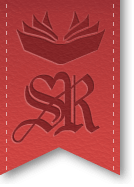How to date a book
In English the word “date” has multiple meanings, so if you are thinking romance, then sadly this is most likely not for you!

Now, when I started working in a book shop and you asked me to find the publication date of the book, I would think “yes I know how to do that” well after a few years I changed to “errr why is it so difficult to find the publication date!”. Now after a few more years, I finally feel I am vaguely getting to grips with the process, and so I thought I would share some of the tips I have picked up.
Firstly when we list a book for sale we are looking for two dates, the first publication date in that form of the book, and the publication date of that issue. The first publication date is only used on our internal database; whereas customers are typically interested in the actual date of that book and its edition.
The majority of books (especially modern publications) this is a fairly straight forward process - you open the book and find the copyright/publication information, this is normally found on the verso of the title page. Hopefully, there you will be able to find all the dates of publication of that book so it may go:
First published 1960
Reprinted 1965
Reprinted 1966
Wonderful, easy and mostly accurate, this information being correct maybe 95% of the time, and found in majority of the books. However, what about the books where the publisher has not put in any information about dates or worse still have reprinted the book using the same printing plates, but just changed something else, for example, maybe their logo on the base of the spine? So let me take you through a few tips and tricks.
Publisher going LTD or changing name
All publishers and 'imprints' of publisher houses have to start their business somewhere and some go bust or get taken over, whilst others change their names. So if you know a little history of the publisher, or can research it, then this can give a clue to the publication date. For example, Frederick Warne became a limited company in 1919, this is particularly helpful when dating Beatrix Potter Books.
Dates on Title page
Occasionally, the only difference between a first edition book and an early reprint is the date of publication given on the base of the title page for a first edition, and missing on a reprint. This is more typically true for books published before World War I. However publishers break this 'rule' so often that it is almost a worthless piece of information unless you have a reference book for that author/ subject matter to confirm it.
Prices on Dust wrappers
My natural instinct is to say that prices of books should gradually rise with inflation and therefore, the copy with the lowest price on the wrapper is the earliest edition. Sadly this is not true, as production cost varied greatly and prices go up and down through the decades, so again this is not the most helpful piece of information, but could be a useful indicator. There is one date for British books which is set in stone and that is 1971, when the currency went decimal. Therefore, any books with dual pricing on are typically published between 1969 and 1971. You see examples of this on W.E. Johns books where everything on the book indicates it is a first edition from 1965, yet on the wrapper there is a decimal price, and then, on closer inspection the publisher may have changed a couple of other minor things eg, cloth colour and logos, but not the publication date.

ISBN and SBN
Between approximately 1969 and 1971 SBN (the precursor to ISBN) were used by some publishers. You quite often see them in Enid Blyton books, especially 'Noddy' books. Just to state the obvious - if a book has an ISBN then it was printed after about 1970, no mater what the publication date says inside the book.
Printers Codes
Some publishers, notably Frederick Warne, use printers codes inside their books. In the case of Warne the code is a 6 or 7 digit number with a full stop in the middle – so, for example, you may see 683.376 inside the book. It is the second set of digits which interest us, the “376” where the “3” = the month, in this example March, and the “76” equates to the year, in this instance 1976. Warne used these codes from about 1942 until 1984.

War Economy Publications
Due to paper shortages and rationing during and after the Second World War, many books printed in Great Britain had a 'war economy' stamp somewhere to the preliminary pages. When this is present it tells us that the book was produced between approximately 1942 and 1949.
Adverts, Catalogues and other titles in series
Most books in some way advertise other books. Often they are by the same author or publisher or some even feature adverts for other companies or services. All of these serve as clues to date a book.

For example:
-
Murray's Guide have a catalogue at the end, on the first page of which it states 'Publication for the year 18?? to 18??”
-
Ladybird books on the rear flap of the wrapper state the other books in the series and if the book you have in your hands is not the last book in the list it most likely is not a first edition, but rather a later reprint (despite the copyright page stating “first published in ….”)
-
With Percy Westerman books, you can use a combination of the publication list and the British Library website to find out when the last book in the 'other titles' list was published which will give you an approximate date of publication.
-
With local topography/travel guides sometimes an advert may contain a special offer and mention a date, again giving the approximate publication date.
Other resources:
-
A dated inscription
-
A date at the end of a preface
-
Publication date from the British Library website
-
Changes to a publisher's logo
-
A good reference book
When we are uncertain about the date of issue we use the word Circa, and a date, and this is normally our best guess of an issue date. However, sometimes we are completely stumped and have to miss out the date of publication altogether on the stock record. Personally I find this rather irritating, as I enjoy the challenge of dating a book!
I am sure there are many more ways to date a book, and indeed there are a few tips I have deliberately missed out, because I am still not happy enough with the techniques to share them with you. Like lots of things in life 'dating' gets easier with experience!
Contributed by Adam
(Published on 30th Jun 2015 )













